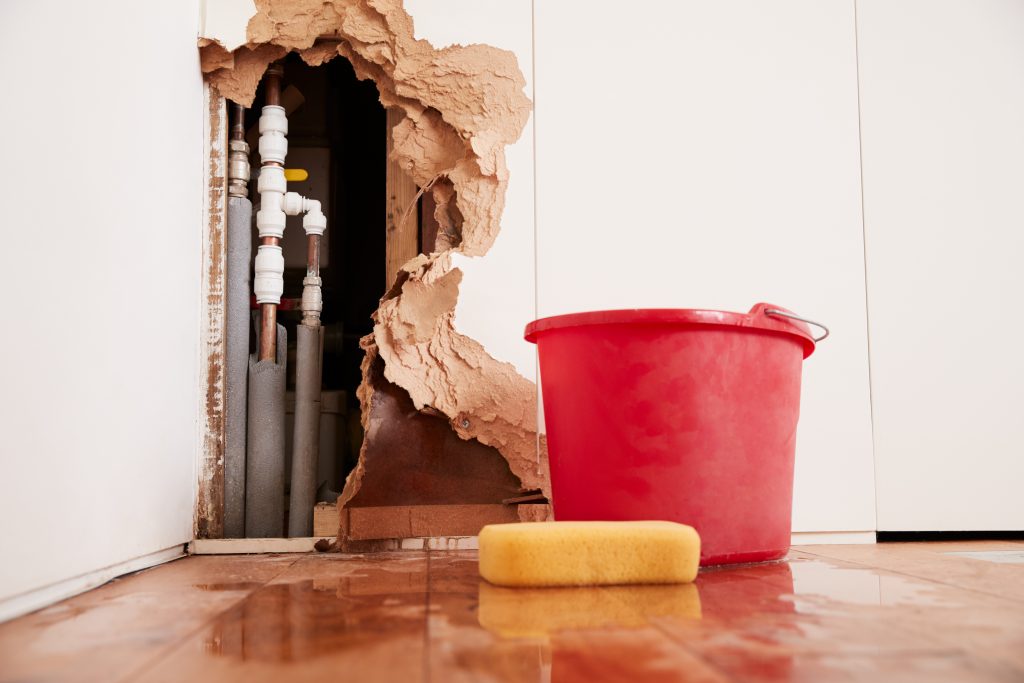Exactly how to Inspect If Your House Has a Concealed Leakage
Exactly how to Inspect If Your House Has a Concealed Leakage
Blog Article
We've stumbled upon this article relating to Locating water leaks down the page on the internet and thought it made sense to relate it with you here.

Early detection of dripping water lines can alleviate a prospective disaster. Some tiny water leakages might not be visible.
1. Check Out the Water Meter
Every residence has a water meter. Examining it is a surefire manner in which helps you discover leakages. For starters, turn off all the water sources. Make certain nobody will flush, utilize the faucet, shower, run the washing maker or dishwasher. From there, go to the meter and watch if it will certainly transform. Because nobody is utilizing it, there need to be no movements. That indicates a fast-moving leak if it relocates. Also, if you spot no changes, wait a hr or 2 as well as inspect back once again. This suggests you might have a sluggish leakage that can also be below ground.
2. Check Water Intake
Analyze your water expenses and track your water intake. As the one paying it, you must discover if there are any discrepancies. If you identify sudden changes, in spite of your intake coinciding, it indicates that you have leakages in your plumbing system. Keep in mind, your water costs ought to fall under the same array every month. A sudden spike in your costs suggests a fast-moving leakage.
On the other hand, a stable boost every month, even with the same routines, reveals you have a slow leak that's also slowly rising. Call a plumber to extensively inspect your property, specifically if you feel a warm location on your flooring with piping below.
3. Do a Food Coloring Examination
When it comes to water consumption, 30% comes from toilets. If the color in some way infiltrates your bowl throughout that time without flushing, there's a leakage between the storage tank and also dish.
4. Asses Exterior Lines
Do not neglect to examine your outdoor water lines as well. Examination spigots by attaching a garden hose pipe. Should water seep out of the connection, you have a loosened rubber gasket. Replace this and also make certain all connections are limited. It will certainly assist get it properly checked out as well as kept annually if you have actually got a sprinkler system. One tiny leakage can throw away lots of water as well as increase your water expense.
5. Evaluate the situation and also examine
Property owners need to make it a routine to inspect under the sink counters and even inside cupboards for any kind of bad odor or mold development. These 2 warnings indicate a leak so punctual focus is required. Doing regular examinations, also bi-annually, can save you from a major issue.
Extra significantly, if you recognize your house is currently old, keep a watchful eye on your heating units, pipes, pipelines and so on. Look for discolorations as well as compromising as the majority of pipes and also devices have a life span. They will certainly likewise normally weaken because of tear and put on. If you suspect dripping water lines in your plumbing system, do not await it to intensify. Call an expert plumber today so you do not end up with an awful mess in your house.
Early discovery of leaking water lines can alleviate a possible calamity. Some small water leaks might not be noticeable. Inspecting it is a surefire way that helps you discover leaks. One small leak can throw away loads of water and also spike your water costs.
If you suspect leaking water lines in your plumbing system, don't wait for it to escalate.
WARNING SIGNS OF WATER LEAKAGE BEHIND THE WALL
PERSISTENT MUSTY ODORS
As water slowly drips from a leaky pipe inside the wall, flooring and sheetrock stay damp and develop an odor similar to wet cardboard. It generates a musty smell that can help you find hidden leaks.
MOLD IN UNUSUAL AREAS
Mold usually grows in wet areas like kitchens, baths and laundry rooms. If you spot the stuff on walls or baseboards in other rooms of the house, it’s a good indicator of undetected water leaks.
STAINS THAT GROW
When mold thrives around a leaky pipe, it sometimes takes hold on the inside surface of the affected wall. A growing stain on otherwise clean sheetrock is often your sign of a hidden plumbing problem.
PEELING OR BUBBLING WALLPAPER / PAINT
This clue is easy to miss in rooms that don’t get much use. When you see wallpaper separating along seams or paint bubbling or flaking off the wall, blame sheetrock that stays wet because of an undetected leak.
BUCKLED CEILINGS AND STAINED FLOORS
If ceilings or floors in bathrooms, kitchens or laundry areas develop structural problems, don’t rule out constant damp inside the walls. Wet sheetrock can affect adjacent framing, flooring and ceilings.
https://www.servicemasterbyzaba.com/blog/how-to-detect-water-leakage-in-walls/

As a keen person who reads about Locating water leaks, I thought sharing that chunk was beneficial. Sharing is caring. You never know, you may be doing someone a favor. Many thanks for taking the time to read it.
Report this page